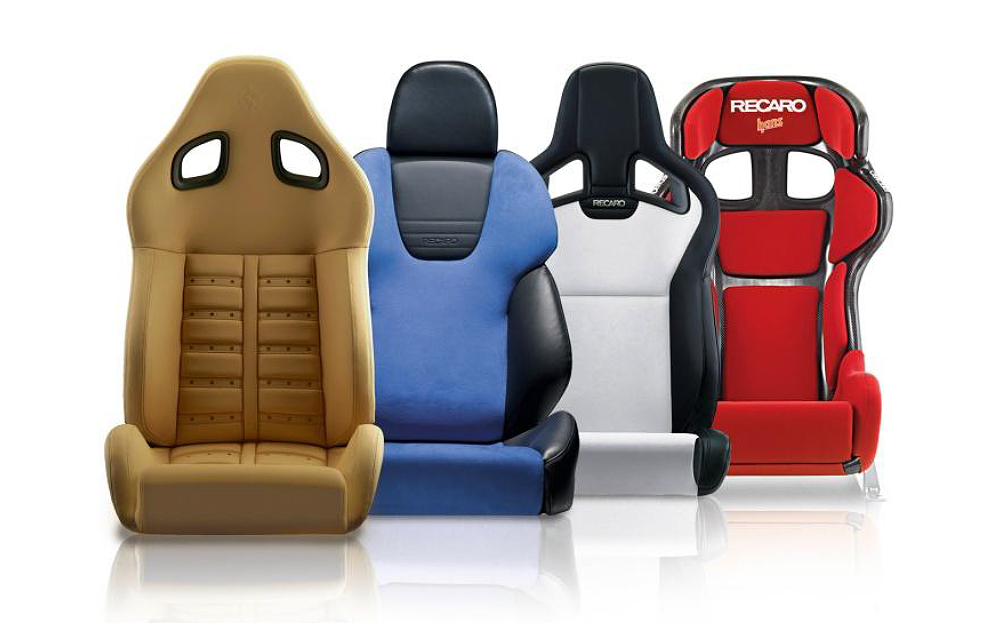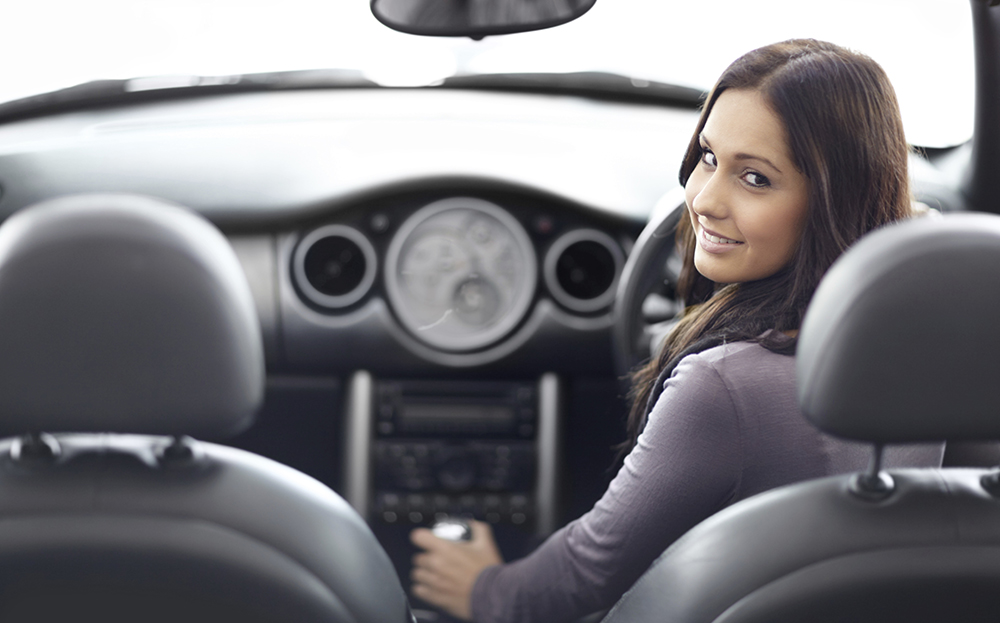How can I make sure I have found the perfect driving position?
Four out of five people suffer from back pain — don't be one of them
IN TERMS of health issues, back trouble is almost up there with the common cold — four out of five people suffer from a bad back at some point during their life. But there’s worse news for drivers: according to the British Chiropractic Association (BCA), 40% of people say that sitting down aggravates back or neck pain. It’s enough to have motorists shuffling uncomfortably in their seats.
What can drivers do to ensure they’re in the best driving position? And how can they know buying a new model of car won’t result in a contorted spine, cricked neck or cramps in the legs?
Driving turned to the experts, seeking advice from the BCA, seat maker Recaro and Swedish car maker Volvo, which is famed for its comfortable seats. Here’s their advice for anyone who finds it difficult to get comfortable at the wheel of their car.
(N.b. Interviews conducted in 2015)
How high should your seat be when driving?
You wouldn’t set off up Everest without first lacing up your hiking boots, says Robin Page, the senior vice president of design for Volvo. So it’s important to fine tune your driving position to suit your bodyshape.
“Seat comfort is best achieved with the correct distribution of weight and support for the body, and the ability to make adjustments if you feel the need to change position,” he says.
All our experts recommend that drivers have their seat pulled far enough forward so that they can fully extend the clutch pedal while maintaining a slight bend in the knee.
The backrest of the seat should be tilted back ever so slightly, and when turning the steering wheel your shoulders should remain in contact with the seat – rather than hunched forward.
The backrest of the seat should be tilted back ever so slightly, and when turning the steering wheel your shoulders should remain in contact with the seat.
Rishi Loatey, a practising chiropractor and member of the BCA, adds that the centre of the headrest must sit higher than a driver’s ears. “If it’s lower than the ears, it acts as a fulcrum in an accident, which actually worsens the effects of whiplash.”
Will we see adjustable pedals appear on more new cars in the future? Robin Page suggests it’s very likely, especially “the more we move into the world of autonomous driving.” Page foresees the pedals moving out of sight once a car is driving itself, returning only when necessary.
Recaro, a car seat manufacturer that has been making car seats since 1965, started out with products for motor racing but today the company is finding there is increasing demand for its range of orthopedic seats. It has created the following video for adjusting your seat, which helps visualise the tips above.
Step-by-step guide to finding the correct driving position by Recaro
- Push your bottom as near as possible to the backrest. The distance from the seat to the pedals is adjusted so that your knee is slightly bent when the pedals are fully depressed.
- Rest your shoulders as closely as possible to the backrest. Set the backrest tilt so that the steering wheel is easy to reach with slightly bent elbows. The shoulder contact must be maintained when the steering wheel is turned.
- Set the seat height as high as possible. This ensures an unobstructed view to all sides and all displays on the instrument panel.
- Set the seat cushion tilt so that it is easy to fully depress the pedals. The thighs should rest gently on the seat cushion without exerting pressure on it. Check the backrest tilt before starting the engine.
- Adjust the extendable seat cushion so that the thighs rest on it to just above the knee. A rule of thumb is that there should be two to three fingers’ clearance between the seat edge and the hollow of the knee.
- The lumbar support has been adjusted when the lumbar part of the back is supported in its natural shape.
- The seat’s side bolsters should fit so snugly to the body that the upper body is supported comfortably at the side without being restricted.
- Adjust the upper edge of the headrest to the same height as the top of the head. The distance to the head should be approximately 2cm.
Not all seats have every method of adjustment mentioned above, but try to follow the general advice for comfort within the realms of possibility presented by your own car seat.
More essential tips for preventing back pain in cars
1. Know how to identify a good seat

A good vehicle seat may not immediately seem all that comfortable, says Frank Beermann, the Director of Industrial Design for Recaro, which supplies car seats to the likes of Aston Martin, Audi, Honda, Mercedes and many more besides. “It will have a light and very rigid core structure, and that structure should be shaped to promote the best possible posture of the human vertebrae.”
You don’t want a soft, squishy seat that’s suspended with springs, he says, as the driver will slump down into it; rather, one that will maintain its shape even after hours and hours of driving.
You don’t want a soft, squishy seat that’s suspended with springs, as the driver will slump down into it
Beermann says drivers should always ensure they can comfortably reach all the controls, such as pedals, gearlever and steering wheel. Then check that the seat adapts to their body, through extra features such as height and tilt adjustment, an extendable seat squab and lumbar and bolster adjustment. And finally, a influencing factor for comfort on long trips is the cabin environment, including the general layout of the switchgear and the easy use of the climate control system.
2. Try before you buy

Loatey says the most common problems that drivers suffer from are lower back pain, sciatica – an irritation of the sciatic nerve that can lead to numb legs – and a stiff neck.
Yet in his experience, often it’s the make and model of car, rather than the act of sitting behind the wheel, that leads to problems for patients. “Interestingly, we often see patients who will say something along the lines of, ‘It’s bad in my car, but when I drive my van I don’t get any problems.’”
Loatey puts it down to the elevated driving position that SUVs, MPVs and vans offer, and says drivers should always try a car for size in the showroom, then take it for a test drive, before they buy it.
A comfortable seat will position the hips higher than the knees, support the shoulder blades and offer a wide range of adjustment
A comfortable seat will position the hips higher than the knees, support the shoulder blades and offer a wide range of adjustment.
“Driving it will reveal whether you’re truly comfortable. You should be able to reach the steering wheel yet still have a bend in your elbows, looking at the mirrors should just be a simple eye movement rather than a head movement and it should be easy to depress all the pedals, especially the clutch, without lifting yourself from the seat.” Often, says Loatey, it’s the small things that drivers do repetitively that contribute most to discomfort.
3. Prevent discomfort while on the road

Loatey says drivers travelling long distances should take a break every couple of hours, and that drivers should break up their journey and do stretches to keep themselves moving.
Simple but effective exercises when in the car and stuck in traffic include buttock clenches, side bends and seat braces – “pushing your hands into the steering wheel and back into the seat” – and shoulder shrugs, with a five second hold, as well as shoulder circles.
Steer clear of tight clothing and shoes with high heels. You wouldn’t wear them when gardening so why wear them in the car?
It’s also a good idea to steer clear of tight clothing and shoes with high heels. You wouldn’t wear them when gardening, as you need freedom of movement, so why wear them in the car? Loatey suggests keeping a practical pair of flat shoes in the car if you regularly wear high-heels.
What is the best steering wheel position?
Usually, it’s not only your seat that can be adjusted to find the best driving position — most cars have telescopic steering wheels that can be adjusted to your preferred height and reach.
Your steering wheel should be as low as possible without obstructing your view of the driving instruments, pointed at your chest, rather than your face. For safety, it’s best that your chest is at least 25cm from the steering wheel (just under ten inches, in old money) — if you’re any closer, you could be risking injury if the airbag deploys.
If you extend your arms fully, the heels of your hands should sit on the top of the steering wheel. This means that when your hands are at the correct hand position for driving — either the classic “ten to two” or the more contemporary chic “quarter to three” — your arms should be slightly bent.
Tweet to @ST_Driving Follow @ST_Driving
- After reading our guide to finding the perfect driving position, you might be interested in our list of all the cars still eligible for the government’s plug-in car grant.
- If you’re looking for a high driving position with a low environmental impact, you may want to read our list of the best plug-in hybrid SUVs.
- We’ve also done a guide on how to repair alloy wheel damage.






